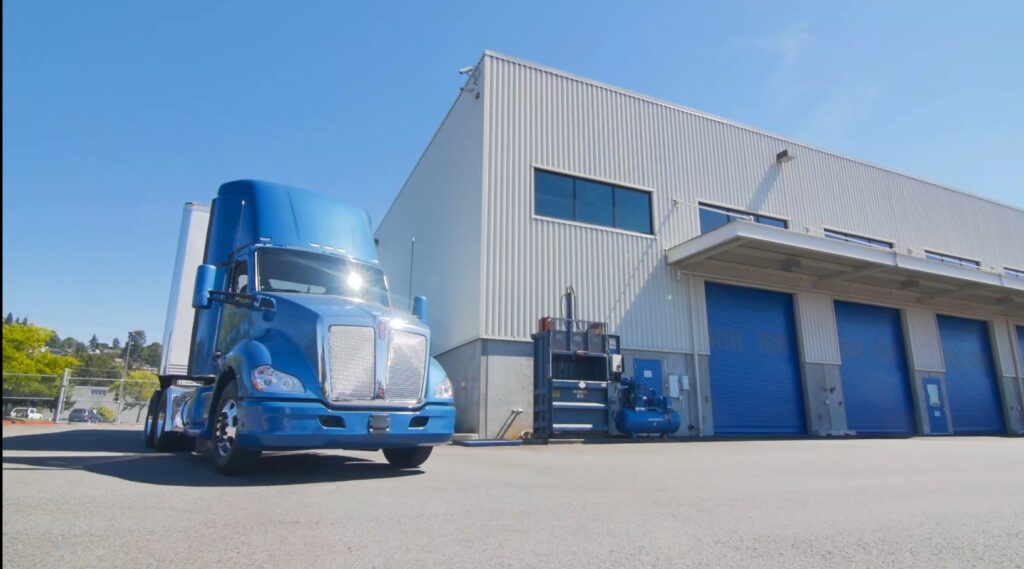Experts in frozen, cold, and dry parcel shipping and storage. Frozen and refer LTL & FTL.

When there is enough cargo to fill an entire truck, freight forwarding (FTL) is the best option. Businesses can enjoy exclusive use of the truck space by choosing FTL, which minimizes the possibility of cross-contamination between multiple shipments. Due to the exclusivity, delivery times can be accelerated as there are no extra stops or pickups along the way. Large volumes of dry goods or cold chain shipping benefit greatly from FTL freight since it provides safe and affordable transportation. Businesses can efficiently ship frozen foods in bulk with FTL, maintaining top quality and preserving the cold chain during transit.
Less-than-truckload (LTL) is a flexible option used when the shipment volume is not large enough to fill an entire truck. LTL shipping is a cost-effective option for smaller shipments because it involves sharing the truck space with other shippers. Regarding frozen goods distribution, LTL freight shipping can be a wise decision. Careful planning and routing by seasoned logistics companies ensures that on-time deliveries do not jeopardize the products' safety and quality control when transported on the same truck as other shipments. Businesses hoping to distribute smaller quantities of frozen foods without compromising the
By carefully selecting between FTL and LTL shipping methods, frozen goods distributors can optimize the transportation of frozen goods based on their volume and specific requirements.
FTL is ideal for large volumes, providing exclusivity and faster delivery, ensuring the integrity of the cold chain. On the other hand, LTL offers an economical solution for smaller shipments, leveraging shared truck space while maintaining the necessary quality control measures.
Both solutions support the effective distribution of thawed foods, permitting companies to satisfy customer demands for premium goods while successfully controlling expenses.
Consistent product quality is one of the main benefits of partnering with a trustworthy frozen goods distributor. These distributors know how critical it is to keep frozen goods fresh and intact. They apply strict quality control procedures at each step of the distribution process, from receiving the goods to storing and shipping them. Highly regarded distributors reduce the possibility of product spoiling by upholding rigid quality standards, guaranteeing that frozen foods arrive at customers' locations in the best possible shape. Businesses that uphold this commitment to quality gain a reputation for producing dependable, superior goods, which boosts client happiness and loyalty.
Reducing product waste is greatly aided by the effective distribution of frozen items. Trustworthy distributors have established processes and frameworks to reduce waste and maximize inventory management. In order to make sure that goods are distributed or sold before they expire, they closely monitor product expiration dates. They also use innovative inventory tracking technology, making precise product rotation possible and preventing out-of-date stock from building up. Businesses can increase their sustainability and profitability by managing inventory well and cutting waste.
Credible frozen item distributors are well-versed in handling intricate logistics and have extensive experience. They have what it takes to overcome the difficulties in shipping goods sensitive to temperature. These distributors make use of effective logistics planning to guarantee prompt product delivery. They utilize real-time tracking systems to track shipments, optimize routes, and consider traffic. Reliable distributors reduce delays and disruptions by optimizing logistics, which improves overall operational efficiency and customer satisfaction.
A key component of frozen goods distribution is efficient inventory control. Dependable distributors use sophisticated inventory management systems that facilitate precise tracking and effective product handling. They keep constant tabs on stock levels while ensuring the ideal balance between supply and demand. Businesses can more efficiently plan their production and restocking activities if they have accurate insights into the status of their inventory. This lowers the possibility of stockouts or overstock, and it assists companies in keeping a consistent supply of frozen foods to satisfy consumer demand.
Joining forces with a trustworthy frozen goods distributor gives you access to the knowledge of seasoned business experts. These experts have an extensive understanding of the nuances of handling and distributing frozen goods. They comprehend the unique needs and difficulties in preserving the caliber and security of products susceptible to temperature changes. These experts' knowledge aids companies in adhering to regulations, putting best practices into effect, and resolving any problems that might emerge throughout the distribution process. Businesses can gain from their insights and guarantee the best distribution practices by utilizing the expertise and experience of these professionals.

By establishing an extensive distribution network, businesses can effectively expand their reach to customers across different regions of the country. Strategic partnerships with established distributors, who maintain strong connections with retailers and food service providers, enable companies to enter new markets successfully and expand their clientele. This comprehensive market coverage not only increases sales opportunities but also enhances brand recognition.
Collaboration with regional distributors and retailers within the distribution network facilitates strategic product placement. Local distributors possess in-depth knowledge about consumer preferences, distribution routes, and regional markets, enabling businesses to tailor their offerings to meet specific regional requirements. Businesses can increase the likelihood of customer purchases by leveraging the valuable insights of these distributors into the local demand for frozen foods. By working closely with these distributors, companies can ensure convenient accessibility and optimal shelf arrangement of their products in stores.
Businesses can ensure thawed food supply and timely delivery to customers nationwide by utilizing a vast distribution network. Products can be kept closer to the final consumer with carefully located distribution centers and warehouses, cutting down on both the time and expense of transportation. This proximity minimizes delays and guarantees that frozen foods reach customers in optimal condition by enabling faster order processing and delivery. Companies can improve client satisfaction and foster brand trust by providing dependable and prompt delivery.
When a distribution network is well-connected, frozen goods are effortlessly accessible across different areas, increasing customer convenience. A large selection of frozen goods is readily available to consumers at neighborhood supermarkets, grocery stores, and online retailers. Customers needing access to a large selection of frozen food options locally or have time constraints when making purchases should pay special attention to this convenience factor. Through collaboration with distributors within a broad network, companies can satisfy various consumer demands and offer a smooth and convenient shopping experience.
Increased customer satisfaction can be attributed to a broad distribution network. Businesses can respond to consumer demands swiftly and efficiently by making sure frozen foods are consistently available and accessible. Consumers value being able to choose from a large assortment of premium frozen goods and the ease with which they can locate these goods in their neighborhood stores or on online marketplaces. Businesses can develop positive brand experiences and customer loyalty through consistent delivery of customer expectations.

When preserving the freshness and quality of frozen goods, packaging is essential. Distributors are implementing eco-friendly packaging materials that are recyclable, biodegradable, or derived from renewable resources to improve sustainability. Transport-related carbon emissions can also be decreased by employing lightweight materials and optimizing packaging design to minimize waste.
A large part of frozen food distribution is the cold chain, and increasing its effectiveness can significantly improve sustainability. Distributors can use sophisticated temperature monitoring systems to ensure energy is used more efficiently during transportation and storage. Fuel efficiency and transportation distance can be reduced and optimized by implementing intelligent scheduling and routing algorithms.
Frozen goods distributors are increasingly collaborating with suppliers that place a high priority on sustainability. This entails purchasing goods from growers and manufacturers who use eco-friendly farming methods, reduce water use, and practice sustainable agriculture. From farm to fork, a more sustainable supply chain can be achieved by working with suppliers with similar values.
Many distributors of chilled goods are proactively measuring and lowering their carbon footprint. They can pinpoint areas for development and put emission-reduction strategies into action by performing carbon footprint assessments. In order to make up for their inevitable emissions, some distributors are also funding carbon offset projects like reforestation or renewable energy programs.

Our distribution service for frozen foods is distinguished by its dedication to quality, cutting-edge technology, affordable prices, and client satisfaction. We prioritize the integrity and freshness of frozen goods by using cutting-edge storage facilities and rigorous quality control procedures. Our vast distribution network and dependable transportation techniques ensure timely delivery throughout the nation. We work hard to surpass customers’ expectations in every facet of our distribution service, emphasizing individualized attention and prompt communication.